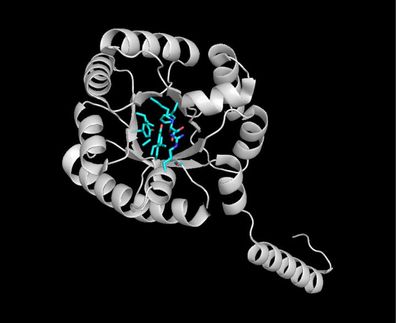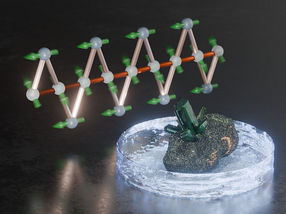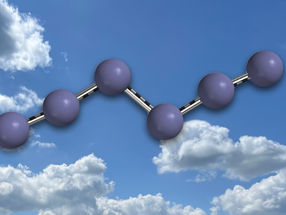New method for introducing fluorinated components into molecules
Chemists have developed a synthesis method for the site-selective integration of the biologically relevant difluoromethyl group into pyridines
The difluoromethyl group often determines the properties of bioactive molecules and is therefore particularly interesting for drug research. This atomic group consists of carbon, two fluorine atoms and a hydrogen atom. Derivatives of the chemical compound pyridine are particularly suited for inclusion in difluoromethyl groups. If a hydrogen atom in pyridines is replaced by such a group, difluoromethylated ring structures can be obtained in an uncomplicated way, which are potential candidates for new drugs and agrochemicals. In terms of efficacy, the position of the difluoromethyl group within the molecule plays a vital role. A team of researchers led by Prof Dr Armido Studer from the Institute of Organic Chemistry at the University of Münster has now presented a new strategy with which the difluoromethyl group can be precisely introduced into pyridines at specific sites. The results have been published in the journal Nature Communications.
Pyridine is an important building block in the pharmaceutical and agrochemical industry for the production of biologically active substances. Pyridine and its derivatives contain rings with five carbon atoms and one nitrogen atom. Using the new method, the difluoromethyl group can be introduced either at the meta-position (two atoms away from the nitrogen) or at the para-position (three atoms away from the nitrogen). The method is promising because the regioselective difluoromethylation of pyridines is considered a challenge in the chemistry field. There were no previously known methods for site-selective meta- and para-difluoromethylation which could be switched between the two positions. “Our study solves the problem of direct difluoromethylation of the pyridine ring at the meta-position, which is particularly difficult to access in complex compounds,” explains Armido Studer.
As pyridines are rather inert compounds, the chemists applied a strategy of temporary dearomatisation. The dearomatised active intermediates react with reagents containing difluoromethyl groups to form the chemically functionalised pyridines. This method is also suitable for the difluoromethylation of pyridine-containing drugs at the end of the synthesis sequence. The pyridine derivatives can therefore be easily converted instead of having to be painstakingly reconstituted.
“Our method is practical and can be carried out with inexpensive, commercially available reagents. This should make our method relevant for drug design,” says postdoctoral researcher Dr Pengwei Xu. “We expect that our approach will find application in the pharmaceutical and agrochemical industries.”
Original publication
Other news from the department science
Most read news
More news from our other portals
See the theme worlds for related content
Topic world Synthesis
Chemical synthesis is at the heart of modern chemistry and enables the targeted production of molecules with specific properties. By combining starting materials in defined reaction conditions, chemists can create a wide range of compounds, from simple molecules to complex active ingredients.

Topic world Synthesis
Chemical synthesis is at the heart of modern chemistry and enables the targeted production of molecules with specific properties. By combining starting materials in defined reaction conditions, chemists can create a wide range of compounds, from simple molecules to complex active ingredients.






























































